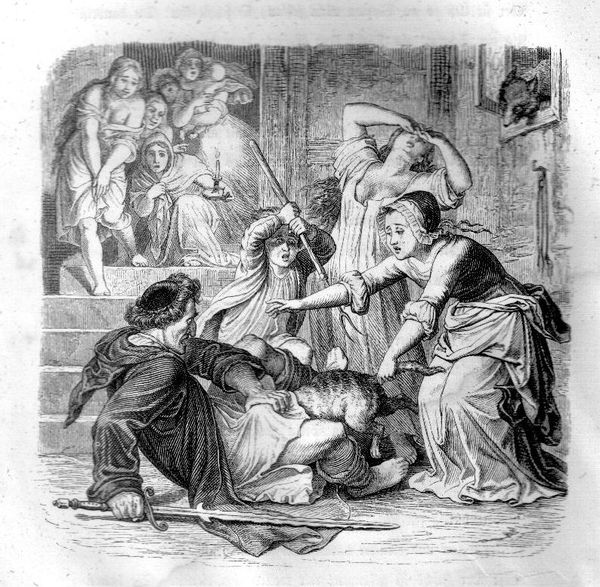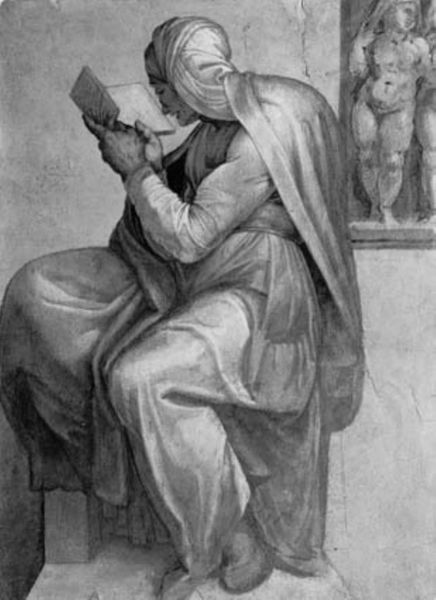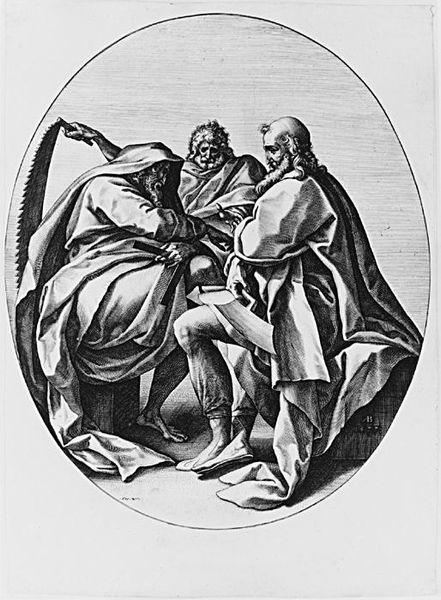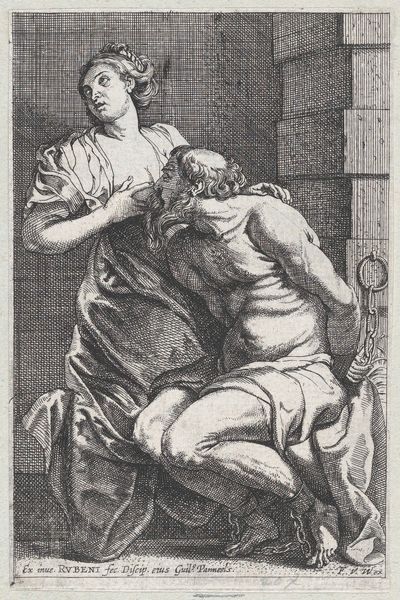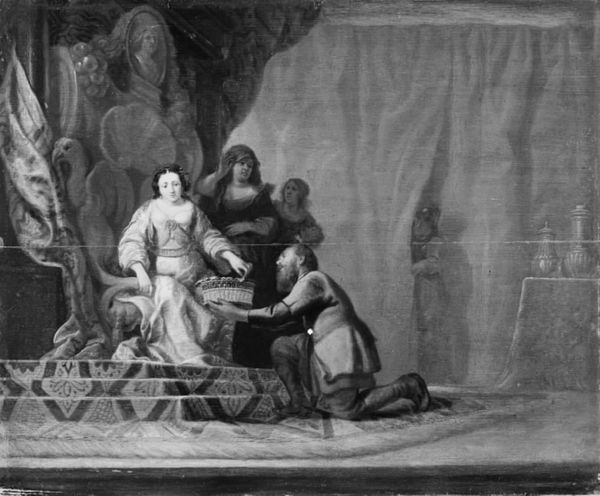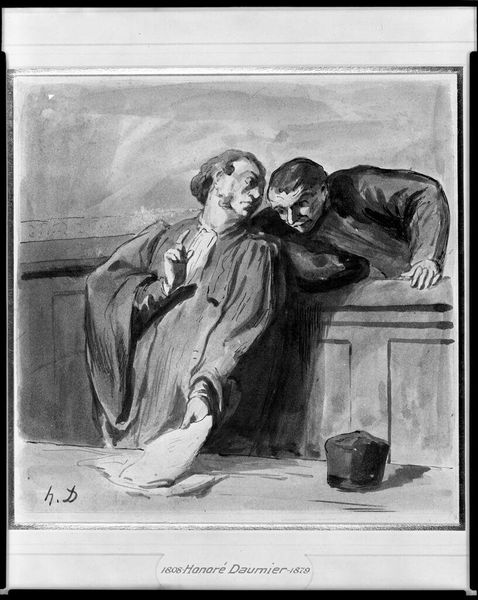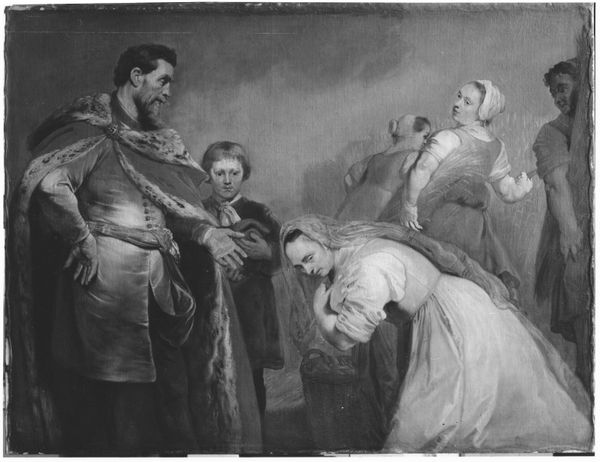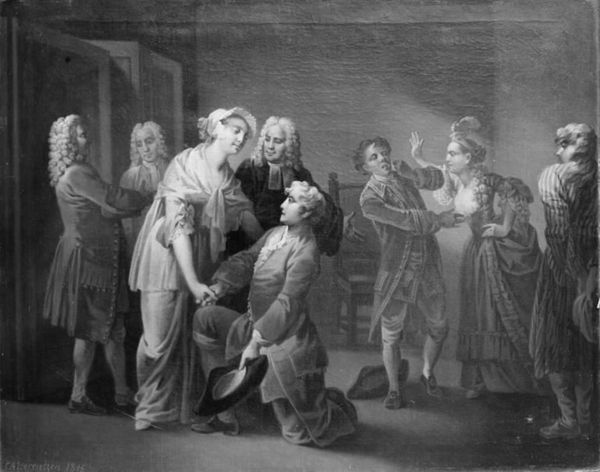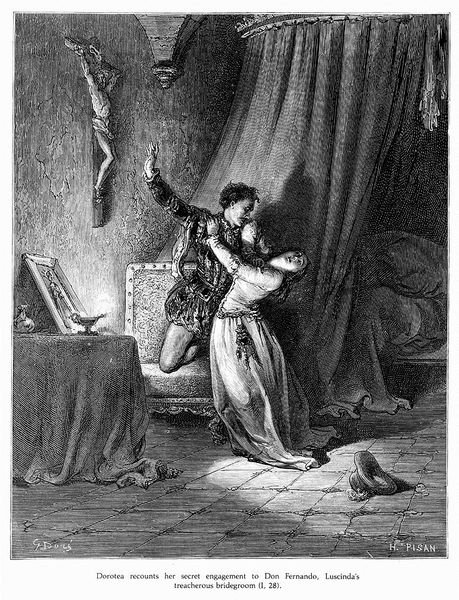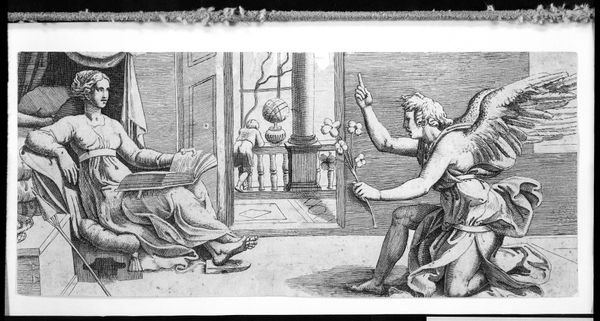
painting, canvas
#
neoclacissism
#
narrative-art
#
painting
#
black and white format
#
charcoal drawing
#
figuration
#
canvas
#
male portrait
#
black and white
#
portrait drawing
#
history-painting
Dimensions: 47.5 cm (height) x 47.5 cm (width) (Netto)
Curator: Nicolai Abildgaard’s painting, "Tarquin and the Sibyl," created in 1809, presents a scene rich in dramatic tension, currently residing here at the SMK. It immediately strikes me as severe in its simplicity. Editor: Yes, there is an starkness to the composition, isn't there? The tonal range is incredibly limited, and yet the stark contrast creates a distinct sense of drama. It really boils the story down to its core conflict. Curator: Absolutely. Abildgaard, working within Neoclassical principles, certainly drew from a place deeply concerned with moral storytelling. The painting illustrates a key moment where Tarquin attempts to undermine the Sibyl and her prophetic books. It underscores themes of power, deception, and resistance, speaking to the socio-political upheaval happening during that period. Remember, it's just after the Danish-English War. Editor: The way he’s used light and shadow definitely amplifies the drama. Notice the emphasis on line—the almost austere rendering of forms—reminds us of Abildgaard's training as a history painter but, is that his strongest technique? And the textures seem surprisingly flat. Curator: The flatness directs us away from illusionism to the historical moment of the work. Think about what fidelity to historical record and morality meant in a society grappling with rapidly shifting cultural foundations! Abildgaard here frames the female Sibyl, divinely chosen and tasked with prophecy, as his moral centre. This, at a time when society heavily favored male agency. This portrayal could be seen as quietly subversive, particularly with her gesture resisting Tarquin's grasp. Editor: Perhaps. Still, observe how Abildgaard utilizes the framing with objects placed like geometric shapes on either side of the human subjects and consider the architectural backdrop - even those choices subtly communicate the tenor of the depicted events. And the expressions captured are incredibly compelling too. Curator: I concur. The emotional narrative is indeed vivid. I would suggest one should analyze the body language and the significance it holds within the artwork; its clear association to classical morality tales offers profound context. Editor: For me, reflecting on how composition, tonality, and structure are all used helps unpack an understanding of how effectively it uses historical art references to shape something original. Curator: A good way of understanding the historical impact and moral weight behind the artwork!
Comments
No comments
Be the first to comment and join the conversation on the ultimate creative platform.
